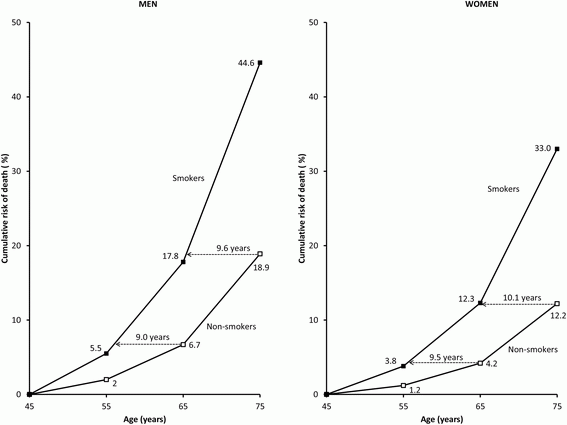Dangers Of Smoking Include Death Two-Thirds Of The Time

Kids learn from an early age that smoking kills, and now scientists have data to show just how fatal the habit really is. Australian researchers recently published a study that found up to two-thirds of all deaths among smokers can be directly linked to the habit.
For many people, quitting smoking isn’t just a matter of awareness. Smokers know that cigarettes damage their health and lower their lifespan. The real problem may be the degree to which they know it is dangerous. For years, discussions on smoking-related mortality lacked the specificity that tends to spur meaningful change. Now scientists have the evidence to back it up.
Emily Banks, professor at Australian National University and lead author of the new study, says overall smoking rates can’t predict the chance someone will die from the habit. “Even with the very low rates of smoking that we have in Australia we found that smokers have around three-fold the risk of premature death of those who have never smoked.” In the U.S., where smoking is still the leading cause of preventable death, the rate has fallen to 18 percent. The CDC estimates cigarette smoking kills more than 480,000 people per year, 41,000 of which are due to the effects of secondhand smoke.
Banks and her colleagues collected data on more than 200,000 people who were enrolled in the Sax Institute's 45 and Up Study. Over four years, they collected follow-up information on many measures of people’s lifestyles, including weight gain, socioeconomic status, age, sex, marital status, and whether they started or quit smoking. They also asked people about their smoking habits more broadly, such as whether they were a never smoker, a former smoker, or a current smoker.
They found a number of disturbing trends, the largest of which being that mortality rates increased faithfully with the number of cigarettes a person smoked each day. People who smoked fewer than 14 cigarettes each day showed a two-fold increase and people who smoked at least 25 cigarettes a day showed a four-fold increase in mortality, compared to people who never smoked. Overall, people who smoked lived an average of 10 years shorter than 75-year-old never smokers.

Reducing smoking rates don’t just reap benefits on an individual level. CDC data show the nationwide burden of smoking totals upward of $289 billion, split between medical care for adults costing $133 billion and lost productivity, which is estimated to cost $156 billion. The new research only adds to the mountain of evidence that calls for sweeping cessation campaigns and global education on where people can turn when they finally decide to quit.
“Looking very broadly, efforts to narrow societal gaps in income and education can be key to dropping rates of smoking, since those with lower incomes and those with less education are more likely to smoke,” said Graham Colditz, a chronic disease epidemiologist from the Washington University School of Medicine. Raising taxes as a financial incentive may also help reduce the rate. In terms of concrete forms of help, Colditz says, too few people rely on pharmacotherapy — nicotine replacement options, like patches and gums — and the existing counseling options available to smokers.
“Building messages that address these gaps can be useful,” Colditz said. “Also likely important is helping smokers successfully deal with the positive aspects they find in smoking — stress relief, pleasure, a needed timeout — as they think about quitting or actively work to quit.”
Source: Banks E, Joshy G, Weber M, et al. Tobacco smoking and all-cause mortality in a large Australian cohort study: findings from a mature epidemic with current low smoking prevalence. BMC Medicine. 2015.



























